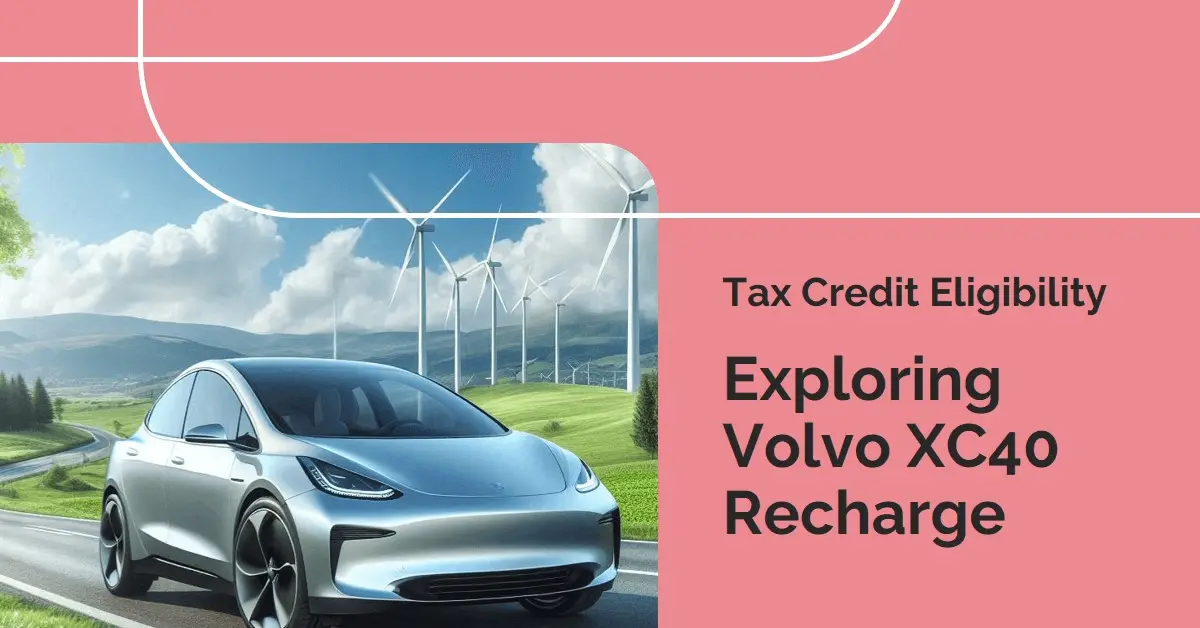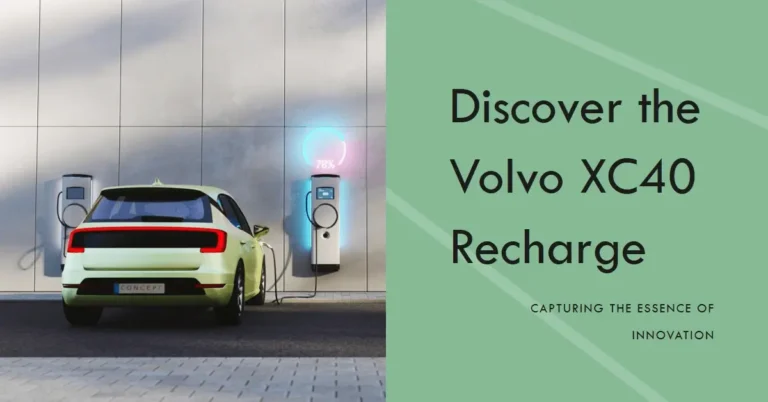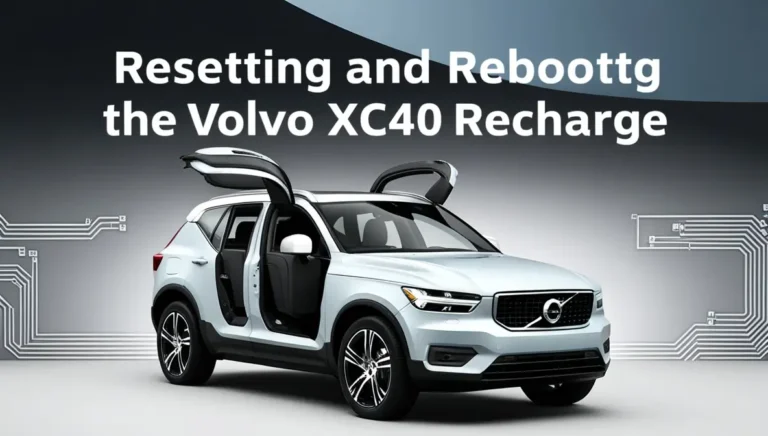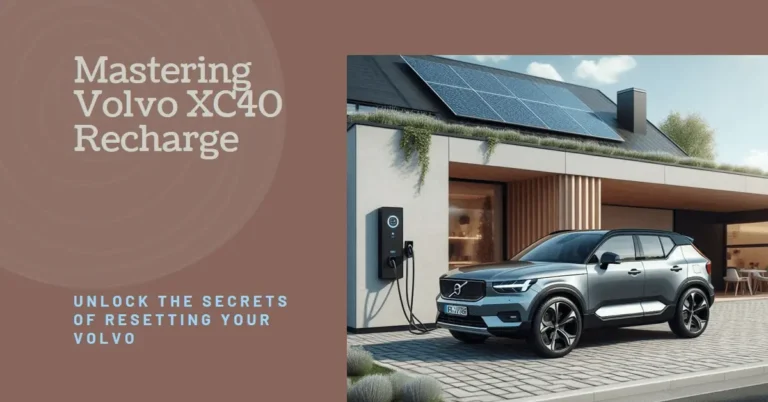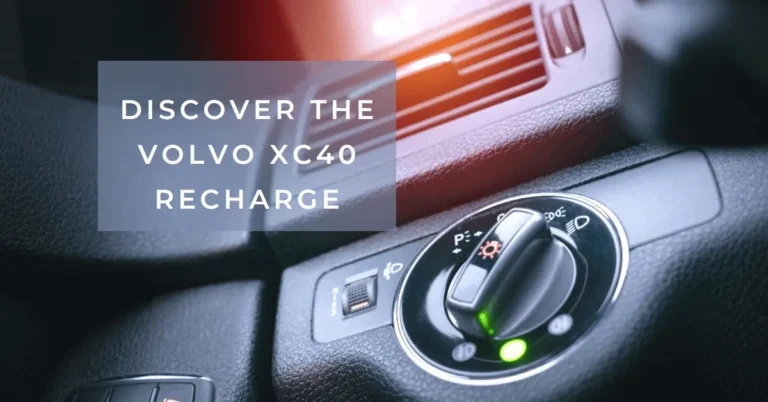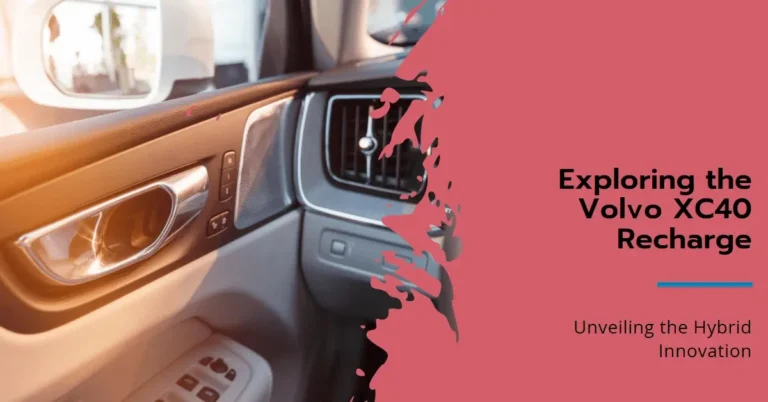Does Volvo XC40 Recharge Qualify for Federal Tax Credit?
You’re feeling pretty darn good about your eco-friendly choice. But wait, there’s more! What if I told you that your wallet might be just as happy as Mother Earth? Buckle up, folks, because we’re about to dive into the world of electric vehicle (E.V.) tax credits, and trust me, it’s more exciting than it sounds!
So, does the Volvo XC40 Recharge qualify for the federal tax credit? The short answer is: it depends. As of 2024, the XC40 Recharge might be eligible for partial or full credit, but there are more twists and turns to this story than a Formula One race track. Let’s break it down, shall we?
Overview of the Federal E.V. Tax Credit Program
Alright, let’s start with the basics. The U.S. government, in its infinite wisdom, decided to give us all a little nudge towards cleaner driving. Enter the Inflation Reduction Act, stage left. This bad boy shook up the E.V. tax credit system faster than you can say “zero emissions.”
Here’s the deal: If you buy a shiny new electric car, you might be able to snag up to $7,500 in tax credits. But hold your horses – it’s not that simple. The government split this credit into two parts:
- $3,750 for battery production
- $3,750 for sourcing critical minerals
It’s like a treasure hunt, but instead of X marking the spot, you’re looking for the right combination of battery tech and mineral sourcing. And let me tell you, it’s about as straightforward as assembling IKEA furniture blindfolded.
But wait, there’s more! Your car needs to be assembled in North America or a free-trade country. It’s like the government’s way of saying, “Hey, if we’re giving you money, let’s keep some jobs close to home, eh?”
Key Requirements for Volvo XC40 Recharge to Qualify
Now, let’s zoom in on our Swedish star, the Volvo XC40 Recharge. Does it have what it takes to join the tax credit party? Let’s check off the list:
- Battery Size: The XC40 Recharge comes with a beefy 78 kWh battery. That’s like having a small power plant in your car! It easily clears the 7 kWh minimum requirement. Check!
- Final Assembly Location: Here’s where things get tricky. As of my last update, Volvo was producing the XC40 Recharge in Belgium. That’s about as North American as spaghetti Bolognese. However, Volvo has been making moves to shift production. You’ll want to double-check the latest info on this one.
- Critical Minerals: This is where things get as murky as a muddy puddle. Volvo, like many automakers, has been scrambling to meet these requirements. It’s like a global game of mineral Tetris.
- Price Caps: Good news! The XC40 Recharge squeaks in under the $80,000 MSRP limit for SUVs. It’s like limbo for cars – how low can you go?
Does the Volvo XC40 Recharge Qualify for the Full $7,500 Credit?
Here’s where we separate the electrons from the neutrons. To get the full $7,500, the XC40 Recharge needs to ace both the battery and mineral tests. It’s like getting all A’s on your report card but for cars.
As of my last check, Volvo was still working on meeting these requirements. They’re like a chef trying to perfect a recipe – a little more of this, a little less of that. Your best bet? Check with your local Volvo dealer for the most up-to-date info. They’re like the Oracle of Delphi for all things XC40 Recharge.
Income Limits for Buyers
Now, here’s a plot twist – even if the car qualifies, you might not! The government decided to put income caps on this tax credit faster than you can say “progressive taxation.” Here’s the breakdown:
- Married Filing Jointly: $300,000
- Heads of Household: $225,000
- Single Filers: $150,000
If you’re above these limits, sorry, Charlie, there is no tax credit for you. It’s like being too tall for the roller coaster, except the roller coaster is a tax break.
Understanding MSRP Limitations for the Volvo XC40 Recharge
Remember that $80,000 MSRP limit we mentioned? Well, the XC40 Recharge starts at around $55,000. That’s like finding a designer outfit at a thrift store price! But watch out – start adding those fancy options, and you might find yourself creeping towards that limit faster than a kid in a candy store with their allowance.
How to Claim the Tax Credit for Volvo XC40 Recharge
Alright, you’ve jumped through all the hoops, and you’re ready to claim your prize. You’ve got two options:
- Claiming at Time of Purchase: Starting January 2024, you can transfer the credit to the dealer. It’s like using a coupon, but way cooler.
- Claiming Through Tax Filing: If you’re old school, you can claim it when you file your taxes using IRS Form 8936. It’s about as fun as doing your taxes can be (which isn’t very, but hey, free money!).
How Does the Transfer of Credits Work?
Imagine you’re at the dealership, ready to sign on the dotted line. You can now transfer your tax credit right then and there. It’s like magic but with more paperwork. The dealer applies the credit to your purchase price, and voila! Instant savings.
Volvo XC40 Recharge and State-Level Incentives
But wait, there’s more! (I feel like an infomercial host.) Many states offer their own incentives. It’s like finding an extra fry at the bottom of the bag – a delightful surprise!
California, for example, offers rebates faster than a Hollywood agent offering deals. Colorado’s not far behind. It’s like a competition to see who can give away the most money for driving electric.
Stacking Federal and State Incentives
Here’s where it gets really exciting. You can often stack these incentives like a Jenga tower of savings. Federal credit, state rebate, local incentives – before you know it, you might be driving off in your XC40 Recharge for the price of a used golf cart. Okay, maybe not quite, but you get the idea.
Future Outlook for Volvo XC40 Recharge and E.V. Tax Credits
The E.V. world moves faster than a Tesla in Ludicrous mode. Post-2024, we might see more changes to these credits than a chameleon changes colours. Volvo is working hard to keep up, tweaking its supply chains and production like a D.J. mixing track.
Other Volvo Models That Qualify for Tax Credits
Don’t put all your eggs in one basket – or all your volts in one Volvo. Check out the C40 Recharge too. It’s like the XC40’s cooler cousin who went to art school.
FAQs on Volvo XC40 Recharge and Federal Tax Credits
What Are the Critical Mineral Requirements?
It’s like a scavenger hunt for lithium, cobalt, and other minerals. The government wants a certain percentage sourced from the U.S. or free-trade partners. Volvo’s still fine-tuning this recipe.
Can I Still Get the Credit If My Income Is Above the Limit?
Sorry, high rollers. If you’re over the limit, you’re out of luck for the federal credit. But hey, check out state incentives – they might be more forgiving.
What Happens If I Take Delivery of the XC40 in 2024?
The rules that apply are the ones in effect when you take delivery. It’s like a game of musical chairs – you want to make sure you’ve got a seat when the music stops.
What Documentation Do I Need to Claim the Tax Credit?
Keep everything! Sales agreement, income docs – if it’s paper and related to your car or taxes, file it. It’s like preparing for an audit, but way more fun (said no one ever).
Is the Credit Refundable?
Nope, it’s non-refundable. It’s like a store credit – great if you owe taxes, not so great if you don’t. But hey, owing less in taxes is always a win, right?
And there you have it, folks! The ins and outs of whether the Volvo XC40 Recharge qualifies for the federal tax credit. It’s a wild ride, full of more twists and turns than a season finale of your favourite T.V. show. But hey, at the end of the day, you might just save a chunk of change while saving the planet. And isn’t that what driving an E.V. is all about? Now go forth and electrify those roads!
The Nitty-Gritty of Battery Production Credits
Let’s dive a little deeper into that battery production credit, shall we? It’s like peeling an onion, but instead of tears, you get savings (hopefully).
The $3,750 battery production credit isn’t just about slapping a battery into a car and calling it a day. Oh no, it’s much more complex than that. The government wants to see a certain percentage of battery components manufactured or assembled in North America. It’s like a culinary challenge where the main ingredient has to be locally sourced.
For 2023, at least 50% of the battery components need to be made or assembled in North America. But hold onto your hats because this percentage is set to increase faster than my electricity bill during a heatwave. By 2029, it’ll be up to 100%. Volvo, like other automakers, is in a race against time to meet these requirements.
Now, I’m no battery expert (my expertise ends in changing the batteries in my T.V. remote), but from what I understand, this involves everything from the cathodes and anodes to the electrolytes and separators. It’s like a chemistry lesson but with billions of dollars at stake.
A Personal Anecdote on Battery Tech
I remember when I first learned about E.V. batteries. I was at a car show, and this enthusiastic engineer was explaining how the battery in an electric car works. My eyes glazed over faster than a doughnut at Krispy Kreme. But then he said something that stuck with me: “Think of it like a really big smartphone battery, but instead of lasting a day, it lasts for hundreds of miles.”
That’s when it clicked for me. These aren’t just big A.A. batteries we’re talking about. They’re marvels of modern engineering, and the government wants them made closer to home. It’s like when my grandma insisted I learn to bake her secret recipe cookies – some things are just too important to outsource.
The Mineral Sourcing Maze
Now, let’s talk about that other $3,750 – the one for critical mineral sourcing. This is where things get trickier than trying to fold a fitted sheet.
The government has a list of minerals they’re interested in – lithium, nickel, cobalt, manganese, and graphite, to name a few. It’s like the periodic table decided to have a party, and these elements got the VIP invitation.
For 2023, at least 40% of the value of these minerals in the battery needs to be extracted or processed in the U.S. or a country with a free trade agreement with the U.S. And guess what? This percentage is also on an upward trajectory, hitting 80% by 2027.
The Global Scavenger Hunt
Here’s where it gets interesting. These minerals aren’t just lying around in everyone’s backyard. It’s a global scavenger hunt, and automakers are the players.
Imagine you’re planning a dinner party, and the recipe calls for ingredients from specific countries. Now, multiply that complexity by about a million, and you’ve got the challenge automakers are facing.
Volvo, being the clever Swedes they are, are working on this. But it’s not just about finding the minerals; it’s about ensuring they’re extracted ethically and sustainably. It’s like trying to make a gourmet meal while blindfolded and with one hand tied behind your back – possible, but definitely not easy.
The Assembly Location Conundrum
Remember how we mentioned that the final assembly needs to be in North America? Well, that’s been a bit of a spanner in the works for our friends at Volvo.
The XC40 Recharge has been rolling off production lines in Ghent, Belgium. Now, don’t get me wrong, Belgium is great – they’ve given us waffles, chocolate, and some fantastic beer. Unfortunately, it’s not in North America (the last I checked, anyway).
This is where things get interesting. Volvo, realizing they’re missing out on this sweet, sweet tax credit, has been making moves. They’ve been investing in their plant in Ridgeville, South Carolina, faster than you can say “y’all.”
A Shift in Production
Word on the street (and by street, I mean automotive news outlets) is that Volvo is planning to shift production of the XC40 Recharge to the U.S. It’s like when your favourite band announces they’re finally coming to your city – exciting, but you’ll believe it when you see it.
If this happens, it could be a game-changer for the XC40 Recharge’s tax credit eligibility. It’s like watching a chess game where the pieces are entire car factories.
The Price Tag Tango
Now, let’s circle back to that $80,000 MSRP limit for a moment. The XC40 Recharge starts well below this, which is great news. But here’s where you need to be careful – options and add-ons can sneak up on you faster than a cat on a mouse.
I once went to configure an XC40 Recharge online, just for fun (because that’s what car nerds do for entertainment). I started adding features – the premium sound system, the fancy wheels, the automated parallel parking (because, let’s face it, parallel parking is the bane of many drivers’ existence).
Before I knew it, I had a virtual car that was dangerously close to that $80,000 limit. It was like playing a very expensive game of Tetris, trying to fit in as many features as possible without going over the line.
The Goldilocks Zone
The key is to find that sweet spot – the Goldilocks zone of car configurations. You want it nice enough to make you feel like you’re living in the future but not so loaded that you kiss that tax credit goodbye.
My advice? Prioritize. Do you really need the panoramic sunroof? (Okay, that’s a bad example because, yes, you probably do.) But maybe you can live without the 20-inch diamond-cut alloy wheels. It’s all about balance, like a well-executed yoga pose, but with car options.
State Incentives: The Cherry on Top
Now, let’s not forget about those state incentives we mentioned earlier. These can be like finding an extra fry at the bottom of the bag – a delightful surprise that makes your meal (or, in this case, your car purchase) even better.
Take California, for example. The Golden State offers a Clean Vehicle Rebate of up to $2,000 for eligible E.V.s. It’s like the state is saying, “Hey, thanks for not contributing to our smog problem. Here’s some cash.”
Or look at Colorado. They’ve got a tax credit that can go up to $2,500 for E.V.s. It’s like they’re trying to make up for all those gas-guzzling ski trips to the Rockies.
A Personal Tale of State Incentives
I have a friend who bought an E.V. last year. She lives in a state with generous E.V. incentives (I won’t name names, but it rhymes with “New Jersey”). She combined the federal tax credit with state incentives and ended up saving enough to buy a level 2 home charger and still have money left over for a nice dinner out.
When she told me about it, I was more shocked than when I found out that pineapple on pizza is a thing. It just goes to show that it pays to do your homework – or, in this case, your state work.
The Future of E.V. Credits: Crystal Ball Not Included
Predicting the future of E.V. tax credits is about as easy as predicting the weather in London – you might have an idea, but you’re probably going to be surprised.
What we do know is that the landscape is changing. The government is pushing hard for domestic E.V. and battery production. It’s like they’re trying to make “Made in America” the hottest trend since avocado toast.
For Volvo, this means they’re in a race against time. They need to get their supply chains, production locations, and mineral sourcing all lined up like ducks in a row. It’s a bit like trying to solve a Rubik’s Cube while riding a unicycle – challenging but not impossible.
The Impact on You, the Consumer
So what does all this mean for you, the potential XC40 Recharge owner? Well, it means you need to stay informed. The eligibility for tax credits could change faster than fashion trends in the ’80s.
My advice? If you’re serious about getting an XC40 Recharge (and why wouldn’t you be? It’s a sweet ride), keep in touch with your local Volvo dealer. They’re going to have the most up-to-date info on tax credit eligibility.
And remember, while tax credits are great, they shouldn’t be the only factor in your decision. Consider the total cost of ownership, including electricity costs, maintenance, and the sheer joy of zipping past gas stations with a smug grin on your face.
In Conclusion, The Electric Road Ahead
As we wrap up this deep dive into the world of E.V. tax credits and the Volvo XC40 Recharge, let’s take a moment to zoom out and look at the bigger picture.
The shift to electric vehicles is more than just a trend – it’s a revolution. It’s like we’re all characters in a sci-fi movie, except the future is happening right now. And governments around the world are trying to nudge us along this electric path with these tax credits and incentives.
The Volvo XC40 Recharge is just one player in this electric drama, but it’s a significant one. It represents the marriage of Volvo’s reputation for safety and luxury with the cutting edge of E.V. technology. It’s like if James Bond decided to save the world by reducing his carbon footprint.
Whether or not it qualifies for the full tax credit today, tomorrow, or next year, one thing’s for sure – the XC40 Recharge is a sign of things to come. It’s a glimpse into a future where our cars are not just modes of transport but active participants in creating a more sustainable world.
So, as you consider whether the XC40 Recharge is right for you, remember this: You’re not just buying a car. You’re buying into a vision of the future. A future where our drives are powered by electricity, our air is cleaner, and our polar bears have a fighting chance.
And who knows? Maybe one day, we’ll look back on this transition period and laugh about how we used to debate tax credits for E.V.s. It’ll be like explaining to kids that we used to have phones attached to walls – they’ll look at us like we’ve grown a second head.
Until then, happy driving, and may your charging stations always be free and your tax credits plentiful!

